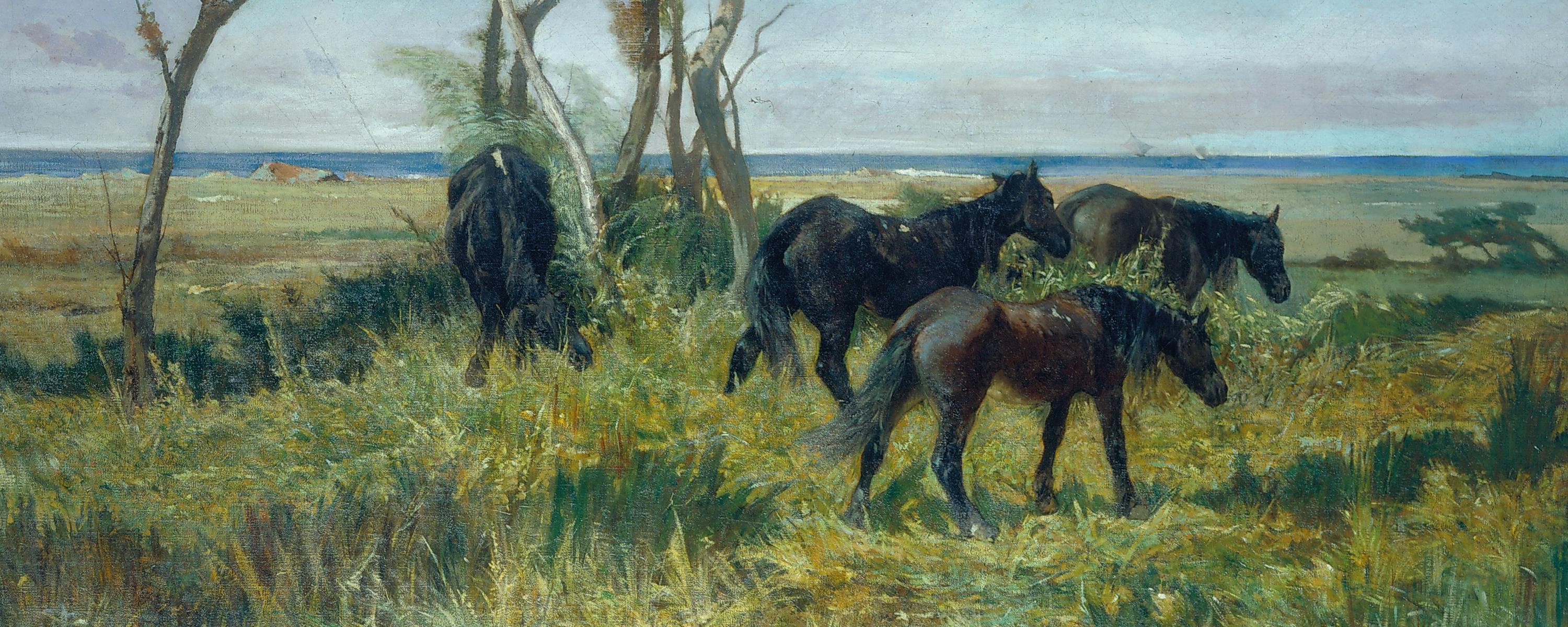the revolution of light
Giovanni Fattori, the greatest exponent of the Macchiaioli movement, was a “meticulous observer” of the sea, the coast and the Tuscan landscapes. A beautiful exhibition celebrates him at the Fortino
Words Cristina Conti - Photography courtesy of Società di Belle Arti
“I love the sea because I was born in a seaside town”. If uttered by an artist, such a sentence almost assumes a stategic value. And to affirm it, in his “scritti autobiografici”, is one of the greatest Italian artists of the 19th century: Giovanni Fattori, born in the seaside town of Livorno and a major exponent of an artistic movement, that of the Macchiaioli, capable of making a breakthrough towards modernity in Italian painting of his time. The sea, the coast and the Tuscan landscape are, in fact, a recurring motif in Fattori and the Macchiaiolis’ works. In particular, that stretch of coast around Castiglioncello, on the Livorno coast, which is in many ways reminiscent of the nineteenth-century Versilian landscape and is still uncontaminated: the pinewoods, where rays of light penetrate with difficulty, and the wide and golden beaches, bathed in sunlight.
The Florentine critic Diego Martelli owned an estate in Castiglioncello who, beginning in 1862, developed the habit of inviting painter friends such as Giuseppe Abbati, Raffaello Sernesi, Odoardo Borrani or, in other words, the group of the so-called School of Castiglioncello. And also Fattori, who, an already established artist, began visiting the Martelli estate in 1866, and Silvestro Lega, another leading exponent of the Macchiaioli movement. These were artists from various parts of Italy, who met in Tuscany, in Florence, at “Caffè Michelangiolo”. And they shared the same new and revolutionary ideas on painting, but also the political ideals of the Risorgimento.
“The Macchiaioli are the first example of a group of independent artists who revolutionized painting thanks to a technique in which the light is the cornerstone,” explains art historian Elisabetta Matteucci. “Their revolution, from the point of view of technique, lies in juxtaposing, on their chosen media - board or canvas - spots of color, in such a way to contrast light and shade. And the light becomes a way of shaping the images”.
The Macchiaioli are the first example of a group of independent artists who revolutionized painting thanks to a technique in which the light is the cornerstone
The desire to radically change painting puts the Macchiaioli into a direct relationship with the French Impressionists, with whom they also share a language, at least apparently similar. Even if the results will be profoundly different. “Up until that moment, landscape painting was based on sketches made in person, which were reproduced and ‘embellished’ in the studio, excluding any disturbing details. They simply opened the window, went to the middle of ‘reality’, to nature, and depicted it in one of its infinite and changing moments”, Matteucci emphasizes.
There is ample evidence of this in the exhibition “Fattori’s Universe”, on display from 22 July to 20 November at the Forte Leopoldo I in Forte dei Marmi, with the catalog edited by Elisabetta Matteucci together with Claudia Fulgheri and Francesca Panconi. The exhibition of about fifty works revolves around the most characteristic themes of the artist from Livorno: the wartime events of the Italian Risorgimento, portraiture and landscape studies of the Castiglioncello period, such as La Punta del Romito and La Punta del Romito con barche e pescatori.
Fattori is an extraordinary landscape painter, but the landscape, and the marinescape in particular, are recurrent in the works of the Macchiaioli, and especially in those of Borrani and Sernesi. “Theirs are landscapes flooded with light, depicting a still uncontaminated nature where human presence, when it exists, has a merely supporting role”, says Matteucci. And she adds a curious detail. “Starting from a certain point, in order to paint landscapes, they chose to use a strongly longitudinal medium: this was the mahogany lids of Havana cigar boxes which, in addition to being in precious wood with a very marked grain, allowed, because of their shape, extremely panoramic views to be created”. A sort of vision in Cinemascope, in short, a few decades before cinema was invented.
The small oil paintings on wood are a typical and characteristic production of this group of artists. Often painted on the beach or on the rocks, by the sea, where the light is purer, freer, and where it is therefore possible to study the variation in its intensity, its color, at different times of the day, with the passing of the seasons, as the weather changes from sunny to cloudy. In his “scritti autobiografici”, Fattori describes himself as a “meticulous observer of the sea, in all its phases”, of that nature ‘from life’ which is at the heart of the Macchiaiolis’ painting.o marcata, consentono, per la loro forma, di realizzare visioni estremamente panoramiche». Una sorta di visione in Cinemascope, insomma, qualche decennio prima dell’invenzione del cinema.
